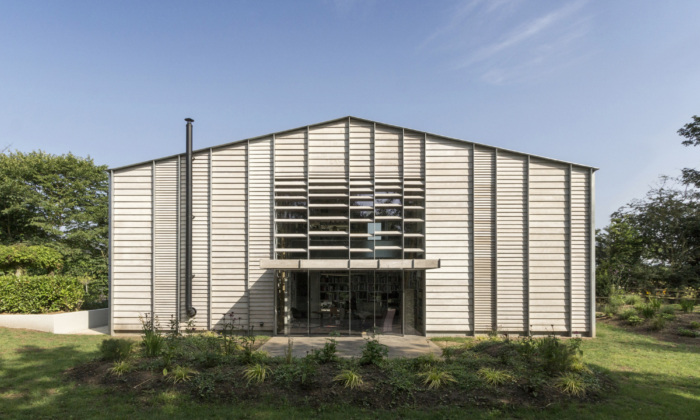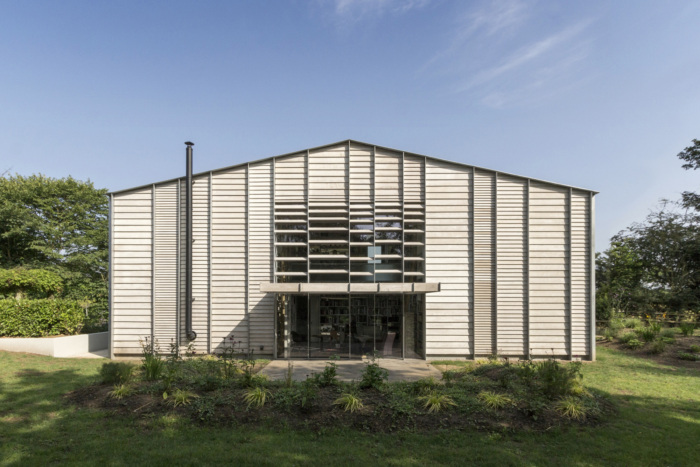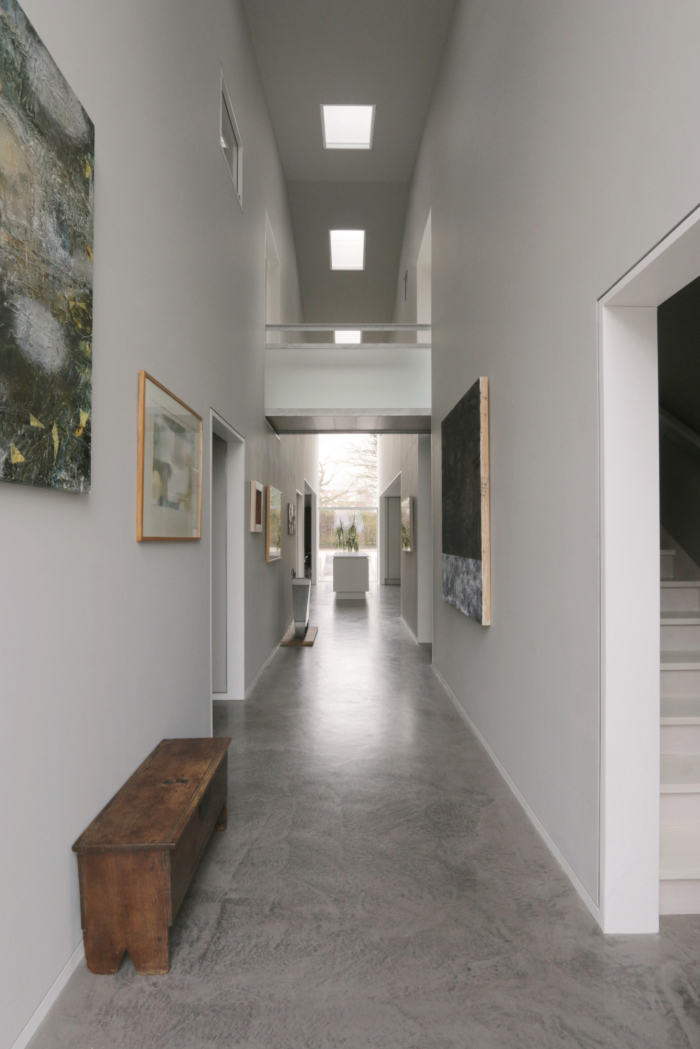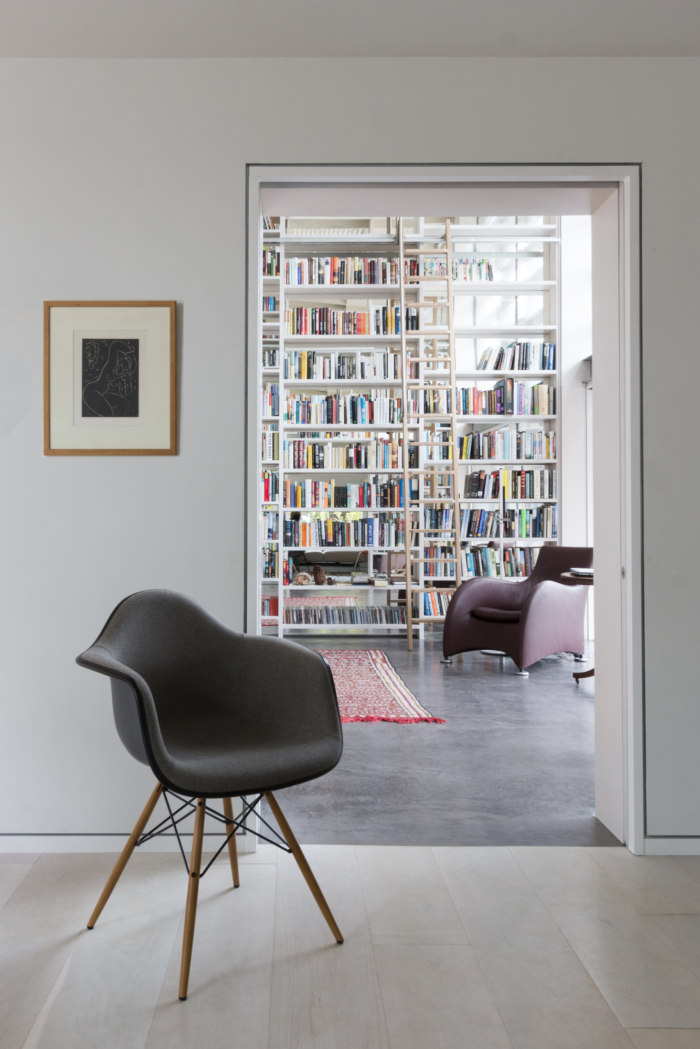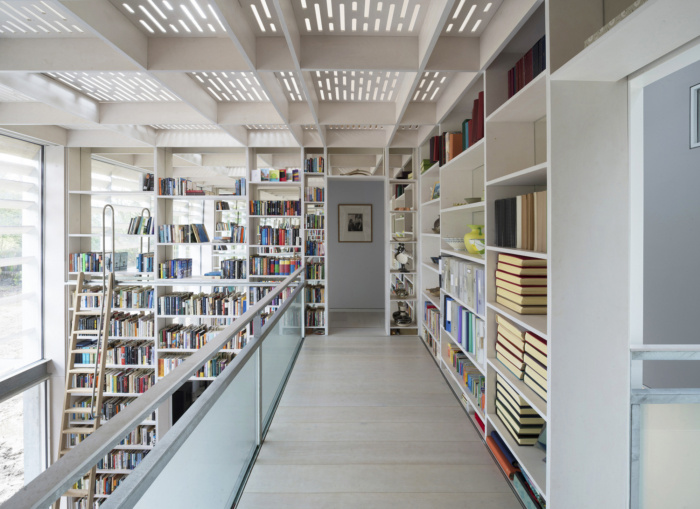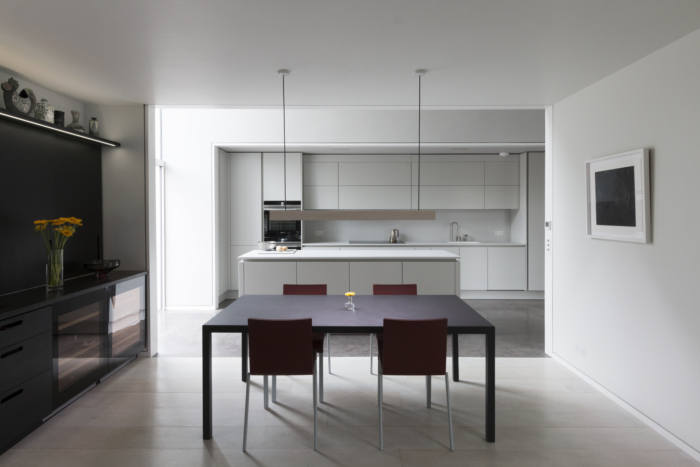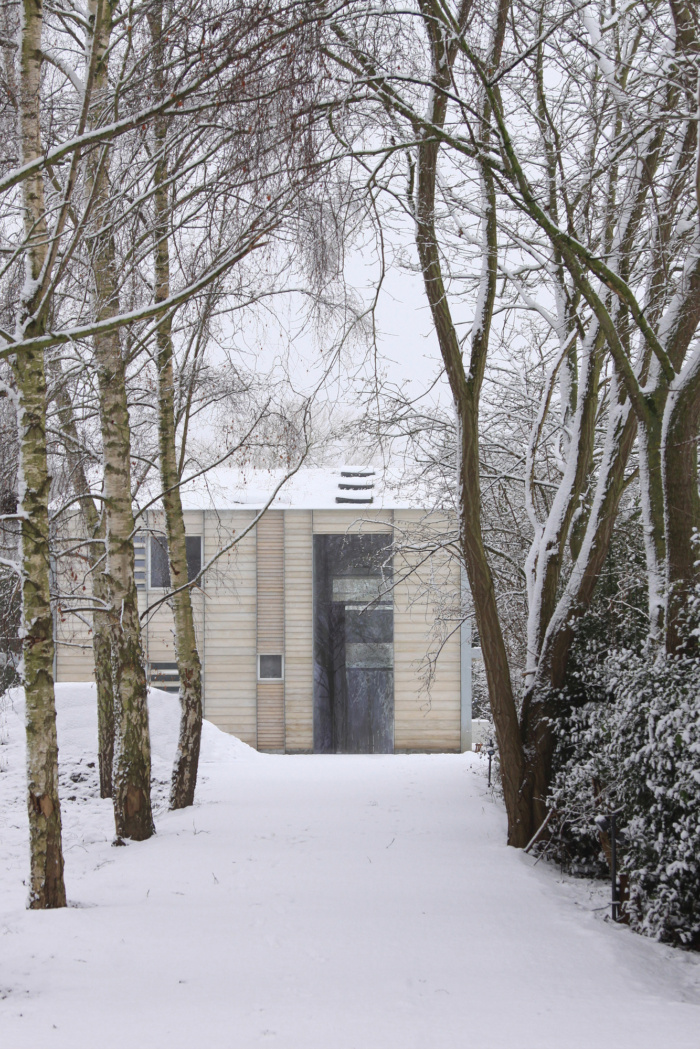Old Shed New House
A mix of intimate and grand space, this English countryside house by Tonkin Liu serves as part gallery, part library and part home.
Old Shed New House is a home nestled within the agricultural landscape of North Yorkshire. The client sought a high quality, energy-efficient and low-cost building to serve as a house, library and gallery.
An existing agricultural shed on the site – once a container for tools and tractors – is now a container for a lifetime collection of books and art. The steel frame and ground slab have been reused and enlarged, retaining the original form of the shed. Newly clad in varied widths of shot-blasted timber and galvanised steel fins, the rhythmic facade reads like the bark of the silver birch that characterise the site.
The house is a journey of interconnected spaces that alternate between the grand and the intimate. The spacious library is wrapped by a modestly sized living room and three bedrooms, whilst behind the long gallery a thick wall conceals staircase, utility room, and storage. The interplay between single and double height space helps create a great sense of volume and light in a compact plan. The home is part country cottage, part classical villa.
The design accommodated the use of traditional construction techniques and low-cost materials to ensure a challenging budget could be met. Through selective reuse, refined detailing, and the holistic integration of structural, environmental and spatial strategies, ‘Old Shed New House’ is a building that aspires to use the least to make the most.
The original three bay steel portal frame of the agricultural shed is extended longitudinally and vertically. It is also propped with internal columns to reduce additional forces and moments imposed by both the increase in size and the additional weight from the new green roof and supporting structure.
Timber framing in the perimeter walls together with plywood sheathing provides longitudinal and lateral stability to the building, and timber rafters and plywood decking provide plate stiffness to the roof, allowing the traditional diagonal bracing in the walls and roof to be removed. Shallow depth stressed skin floors minimise floor construction and maximise floor to ceiling height.
Galvanised steel fins secured to the timber framing serve as an exoskeleton to both carry the timber louvres that wrap the building and to provide support to the two cantilevering canopies. The canopies serve as a porch to the main entrance and a shading device to the large south-facing glazed façade of the library. The steel fins are braced by the timber louvres to ensure the plate thickness could be kept to a minimum, varying from just 8 to 15mm.
Internally, galvanised steel structural steelwork is also used to support a lightweight linking bridge and library mezzanine floor. The minimum sizing and careful detailing of the fabricated steel sections ensures the visual impact is reduced and so as to match the appearance of the steel externally.
The building is clad in galvanised steel and rough-sawn then shot-blasted larch to reflect the language of the copse of silver birch trees that the house sits within. The lapped larch boards run horizontally between the vertical steel fins. In order to create a rhythmically patterned façade, the cladding boards vary in height and the bays formed by the fins vary in width. The fins form window and door reveals, structural cantilevering canopies, supports for the solar louvres, roof capping, and the open corner junction.
At ground level, the fin drops into a shingle-filled perimeter drain. Between the shingle and the larch cladding – which is lifted to be protected from weathering – a galvanised steel base plate clads the exposed wall to form an external skirting to the building. At roof level, a concealed gutter is set inside the galvanised steel capping plate. The roof covering is a sedum blanket that finishes flush in the plane of the capping plate.
Design: Tonkin Liu
Photography: Greg Storrar, Alex Peacock

